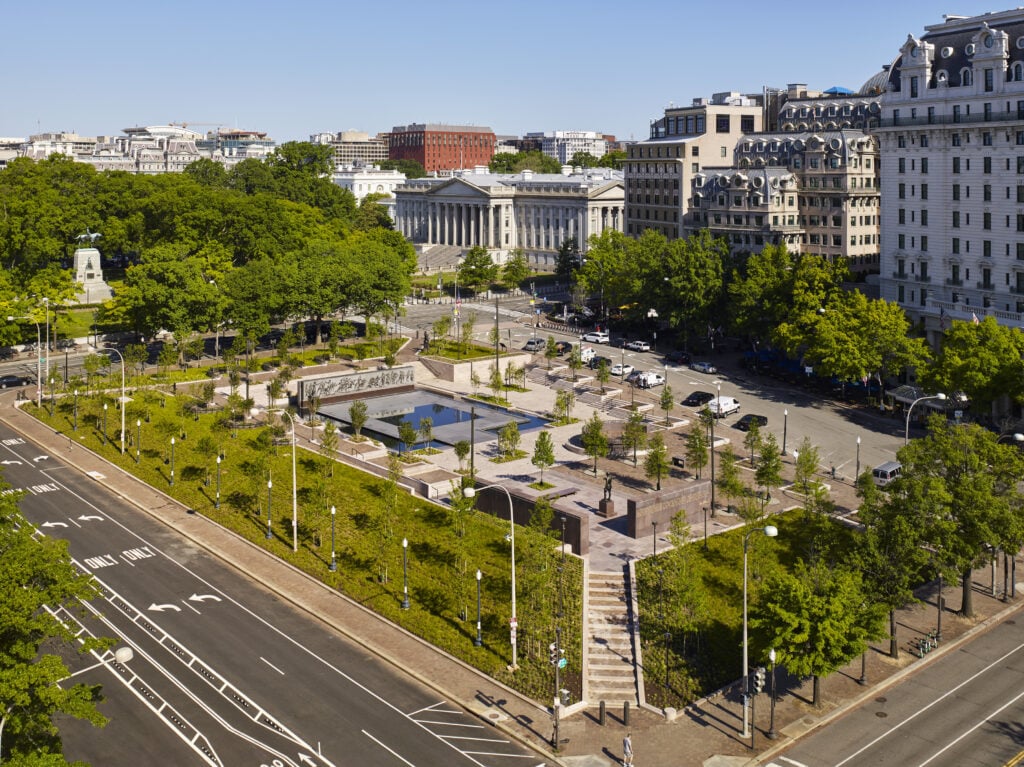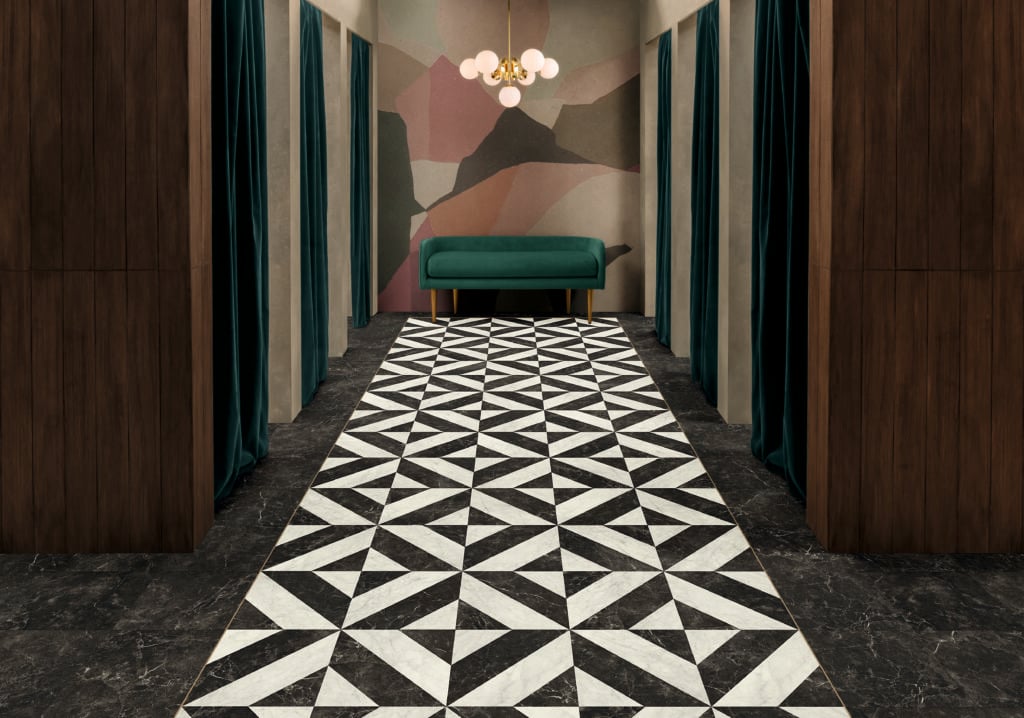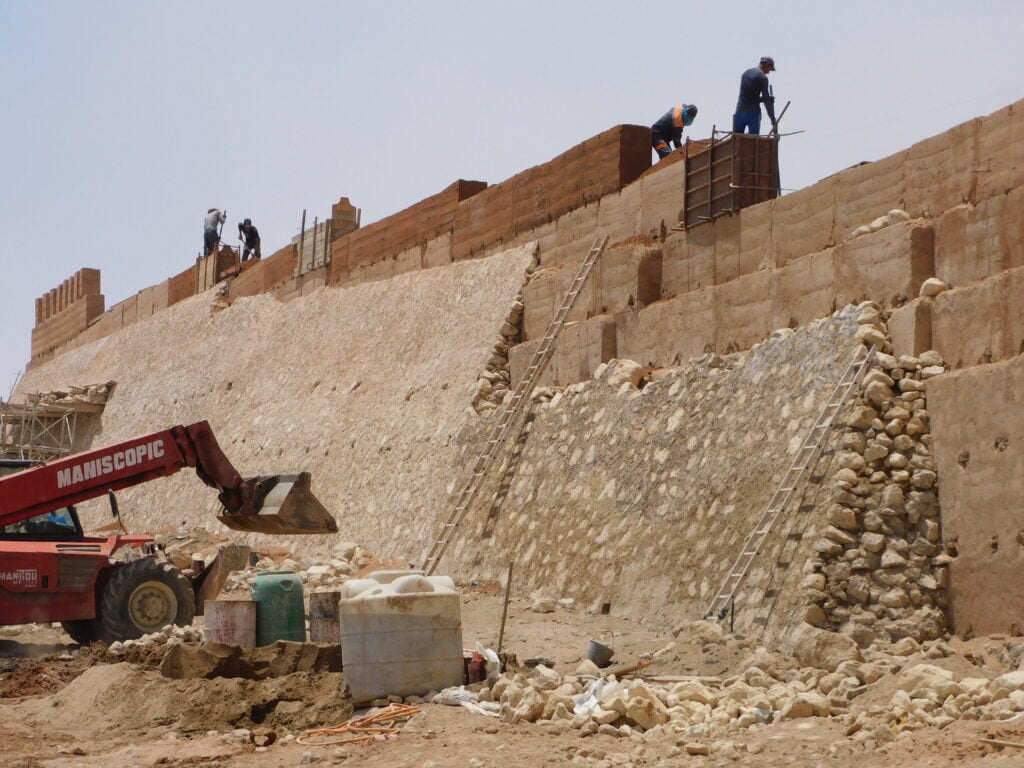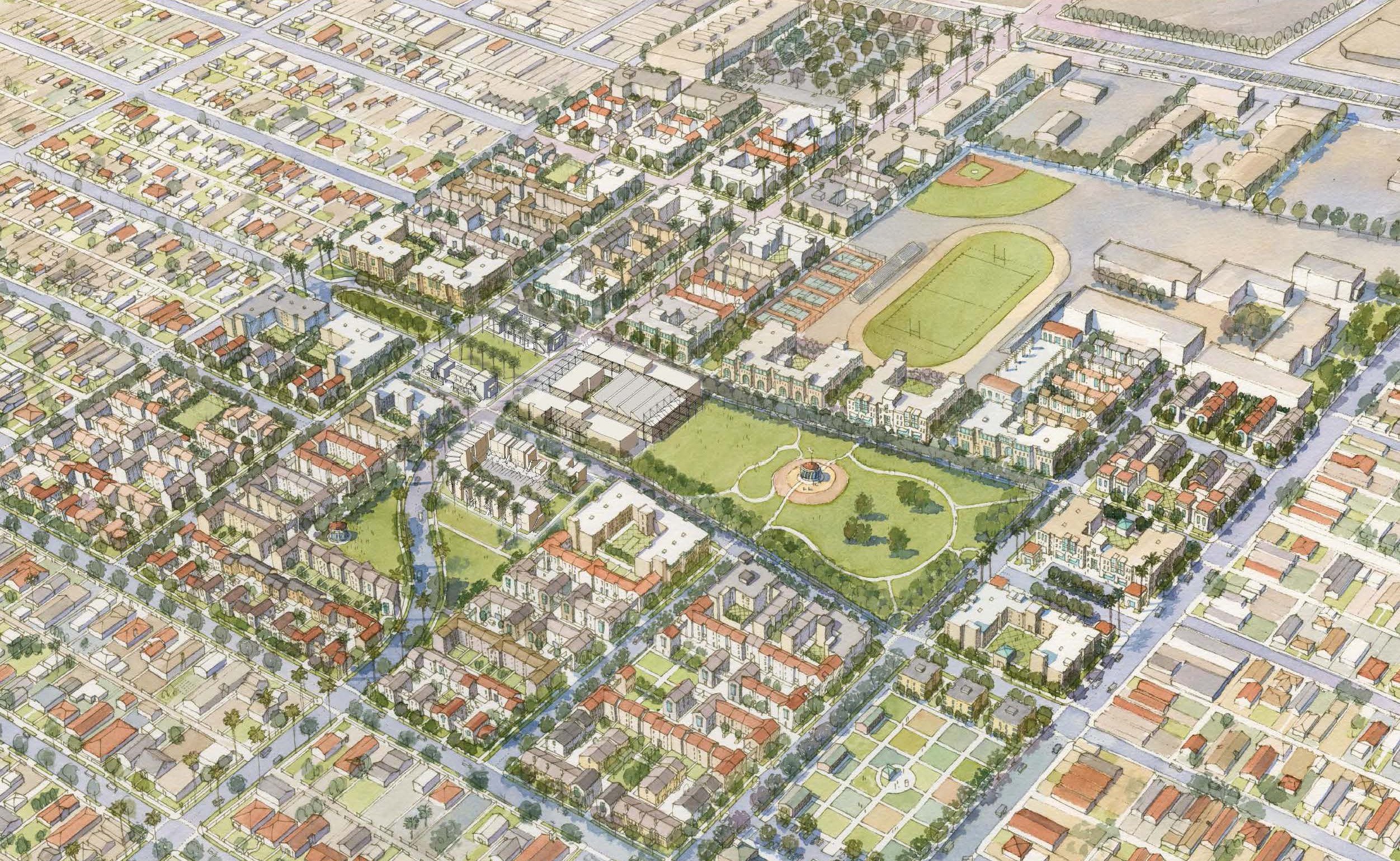
December 12, 2023
How South L.A. Is Fighting Gentrification with Affordable Housing
“We’re about improving the lives of the people we serve. We’re about creating whole communities and giving our residents huge opportunities.”
Jenny Scanlin, Chief Strategic Development Officer, HACLA
Yet while these undertakings have the potential to become exciting catalysts, they won’t substitute for more direct efforts to remedy South L.A.’s biggest challenge: a dire housing and community development crisis promulgated by its history of neglect and disinvestment. Not only is too much housing here below standard, but creeping gentrification in one of the city’s few affordable areas is threatening to render quality stock out of reach. In response, the city has launched multiple initiatives to update badly outdated community plans and to ramp up affordable housing.
Jordan Downs Brings Urban Innovation to South Los Angeles
Arguably no effort here has been more substantial than the renewal of Jordan Downs, a 700-unit 1940’s era public housing project in the Watts neighborhood whose cold, institutional environment and steady deterioration had by the 1980s and 90s made it one of the West Coast’s most notorious case studies for the struggles of public housing. Several units still remain; most are shabby, low-lying institutional buildings with bars on the windows.
In 2013 the city approved a master plan for Jordan Downs’ redevelopment, led by the Housing Authority of the City of Los Angeles (HACLA) along with private developers The Michaels Organization and Bridge Housing. The 60-acre project was dogged by early delays, but it’s now more than halfway to completion, and when finished it will include over 1,500 units of new mixed-income housing, 100,000 square feet of retail, a community center, park space, and new roads and infrastructure. It’s basically the most expansive development in the city since Playa Vista, a new west side neighborhood that sprang up on land that once belonged to Howard Hughes’ aerospace empire.
Already Jordan Downs Urban Village, as its developers have rebranded it, is showing signs of promise. While the architecture isn’t formally cutting edge, it boasts a number of important innovations and is starting to feel like a significant, very livable place.

The development has been divided into six phases, each with its own set of typologies, densities, and approaches. There is a mix of affordable rental and owner properties, and a limited amount of market rate units. Overall the design style, as dictated by the master plan, is “Mediterranean-influenced,” an effort, cites the plan, to reflect local historic buildings and the area’s modest bungalows. “The community really felt that having something that was Mediterranean or Spanish style was important to create a thread of connection,” notes Jenny Scanlin, HACLA’s Chief Strategic Development Officer. But each architect and developer team’s interpretation of Mediterranean differs substantially. Earlier phases tend to be more traditional, with tile roofs and warm colors, while later ones are more stripped back, even modern. “We don’t want everything to look exactly the same. If you go to the rest of the city every building doesn’t look the same,” says Geoff Moen, HACLA’s Director of Development.
The scale of the site’s buildings is lower along its outer edges to meet the neighborhood’s surrounding single family houses and becomes taller toward its center. In order to take advantage of the mild weather and provide for former residents, who often had their own private outdoor spaces, many buildings consist of two- or three-story townhomes with direct access from the street, while larger buildings have outdoor walkways, balconies, shade structures, large green courtyards, and other connections to the outdoors. Masses are broken down via varying textures, colors, massing modulations, and materials.
Sustainability and Connections to the Urban Fabric
“The negative space became one of the key design features,” says Keith McClosky, Associate Principal at KTGY, who have designed several buildings for Bridge Housing. “Passive, thoughtful ways to open up buildings and create connections.” AC Martin Associate Principal Jeff Mertzel adds that their project (also for Bridge Housing) has more detailing than a lot of the firm’s market rate multifamily work. “We wouldn’t have this scale of modulation, the differing levels, terraces, and breezeways” he says. Approvals moved faster than his other work as well, Mertzel says, because the building department established its own team for the project.
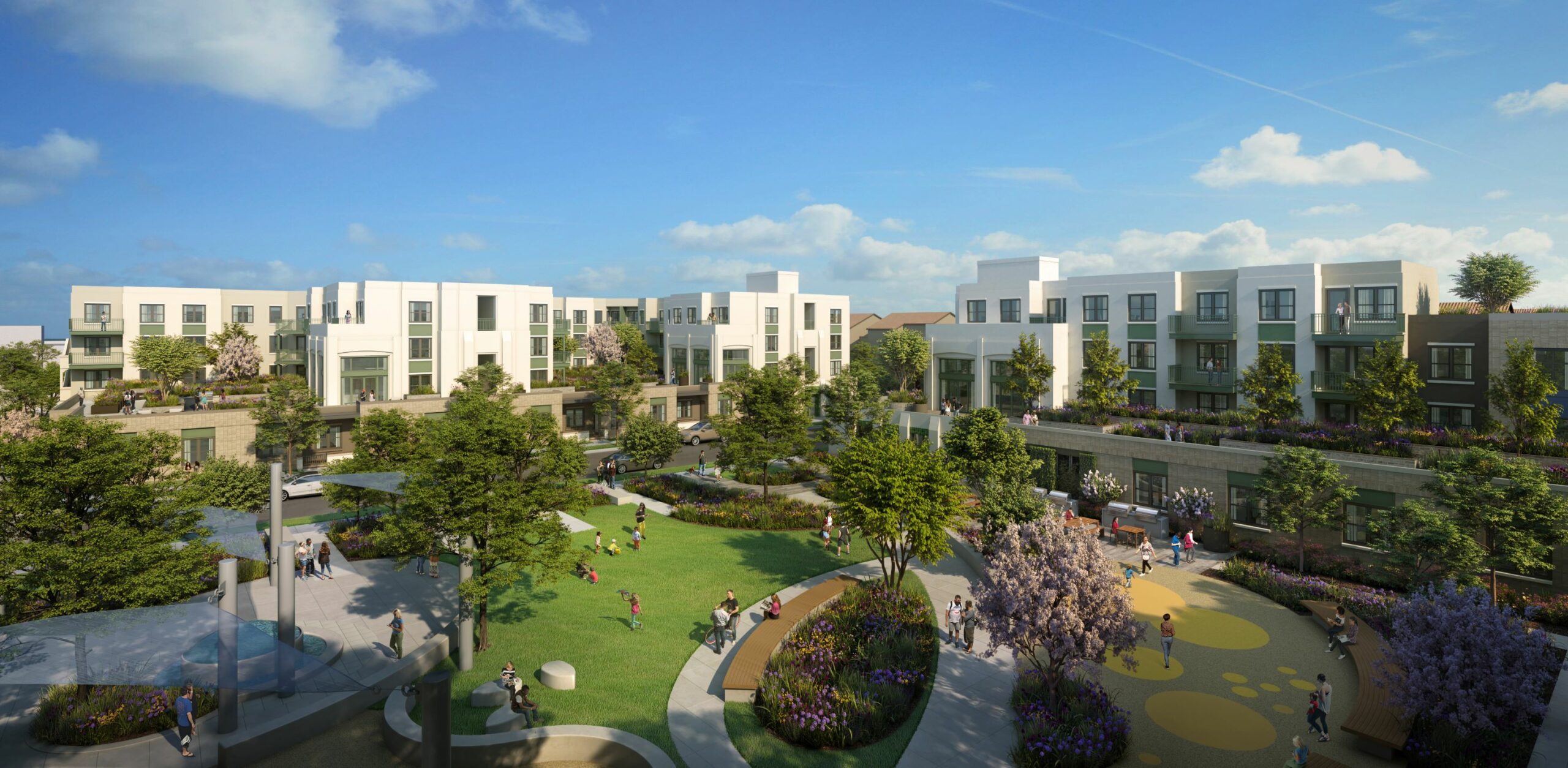
Outside of architecture, it’s the urban innovations at Jordan Downs that are setting it apart, helping provide the energy, softness, and connection that the area had long lacked. This includes connecting what were super blocks to the rest of the city via a through grid of streets, installing a new main thoroughfare via an extension of Century Boulevard. There’s also new street level retail and Freedom Plaza, a handsome shopping center by Nadel Architects incorporating public art, landscape, and stylish colors and materials. The removal of an industrial site that once bisected the development has paved the way for more housing and a large central park, which is still seeking funding. Each phase contains its own smaller green spaces and pocket parks, helping create mini communities within the larger community. The project has also become the city’s second LEED Neighborhood Development, after Playa Vista, thanks to its collection of LEED certified buildings, green spaces, and complete streets.
HACLA’s efforts to improve the public realm go beyond the site, notes Scanlin. This includes working with partner organizations to rehabilitate hundreds of homes in the immediate vicinity, planting more street trees, building a new bikeway, and even helping green local schools.
“We are a housing authority, but we’re about improving the lives of the people we serve,” says Scanlin. “We’re about creating whole communities and giving our residents huge opportunities.”
A Community-First Approach to Development
Much of the project came a result of a rigorous dialogue consisting of dozens of community meetings with residents to provide regular feedback. Among the results was the assurance that no one would be displaced by the development. All residents are being moved to new facilities before their previous lodgings are removed, which explains why some of Jordan Downs’ buildings remain, like frozen museum pieces.
“HACLA got residents to buy in from day one, and that has made all the difference,” noted Sierra Atilano, Executive Vice President at Bridge Housing. “When you see the head of HACLA at resident meetings asking about residents’ children and how they’re doing it says a lot. I’ve seen them go above and beyond.”
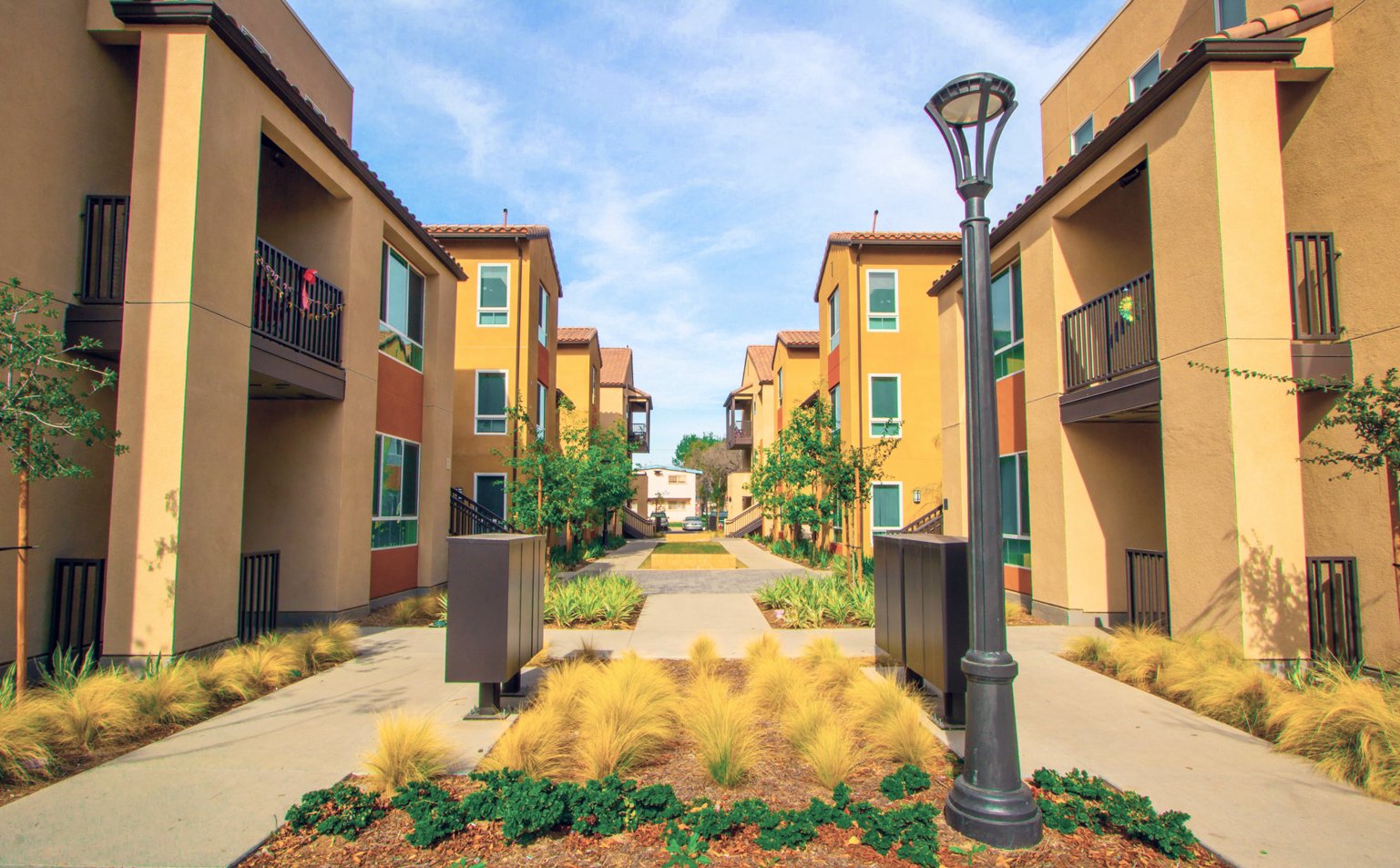
Denise Penegar, a Jordan Downs resident now living on the in a new apartment called Park Place, has lived in Jordan Downs for 18 years. She was one of several “community coaches” who went to all local meetings and were part of discussions with city leaders on behalf of the development. Penegar had her doubts that the project would ever happen (“I used to say I’ll be dead and gone by the day this finishes,” she says) and has been pleasantly surprised that she and her neighbors’ needs were prioritized. She’s happy with her new fifth floor apartment, which replaces a small yard for a balcony and views. She finds it much cleaner and safer than her old unit. But she’s critical that it does not have its own washer and dryer. (She shares that facility with others on her floor.) Future residents are set to have their own laundry, she notes.
“I knew we couldn’t have everything,” she says, adding that friends in other public housing developments want HACLA to update their lodgings now too. (HACLA is planning major redevelopments in a number of its more deteriorated public housing developments, including Ranch San Pedro, a 21-acre site in L.A.’s San Pedro neighborhood; Rose Hill Courts in El Sereno; and William Mead Homes in Chinatown.)
Public Spaces at Jordan Downs Aim for Longevity
This community-first approach is a key recipe for success in a place where top down planning and architecture has long been the norm. At nearby Nickerson Gardens, also in Watts, the musician Flea of the Red Hot Chili Peppers and Donny Joubert, co-founder of the Watts Gangs Task Force, have collaborated with the community and HACLA to create a new park that has replaced what was a decaying series of unused concrete and metal play spaces, a couple of benches, and a single pull up bar.
The new design, created pro-bono by NBBJ’s experience design studio, ESI Design, draws on the flowing design of the dilapidated park that came before. But it’s floored with warmly colorful, and recyclable, rubber composite, and filled with state-of-the art offerings like misting poles, shading canopies, swings, and a slide, netted play structure, carousel, and indoor adult fitness center. The opening of the park, says Kristen Svorka, senior project manager at ESI Design, was celebrated with a concert featuring the Chili Peppers and local rapper Jay Rock, who lives in Nickerson Gardens.
As the deterioration of the old park demonstrated, another key to ensuring the success of Jordan Downs will be upkeep. This was, of course, another Achilles heel of midcentury public housing. At Nickerson’s new park equipment is extra durable and easily cleanable and replaceable, says Svorka. At Jordan Downs, HACLA has developed the New Century Association, which requires all property owners to pay into the association for general area maintenance, trash collection, and landscaping costs. “We’re trying to bring it up to modern standards,” said HACLA’s Moen. “I would go a step further and say as good as anywhere else in the city. It should be better. It should be a place people are happy and excited about. We think we’re well on our way toward it.”
Would you like to comment on this article? Send your thoughts to: [email protected]
Latest
Profiles
Democracy Needs Room to Breathe
From reimagining Pennsylvania Avenue to reactivating Franklin Park, David Rubin and his Land Collective Studio are helping Washington, D.C. reclaim its public spaces as open, flexible, and deeply democratic.
Viewpoints
Perspectives on PVC: What Is the Path Forward?
Three experts offering distinct perspectives unpack the complexities—and possibilities—of designing with (or without) PVC.
Profiles
Salima Naji’s Quest to Preserve Culture Through Architecture
Salima Naji’s Quest to Preserve Culture Through Architecture. Across Morocco, the architect and anthropologist is rebuilding ancient buildings so that they may endure for generations to come.



